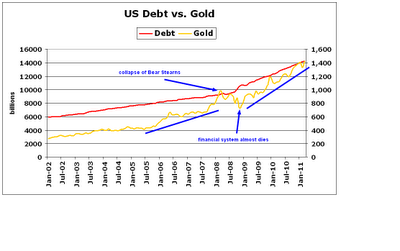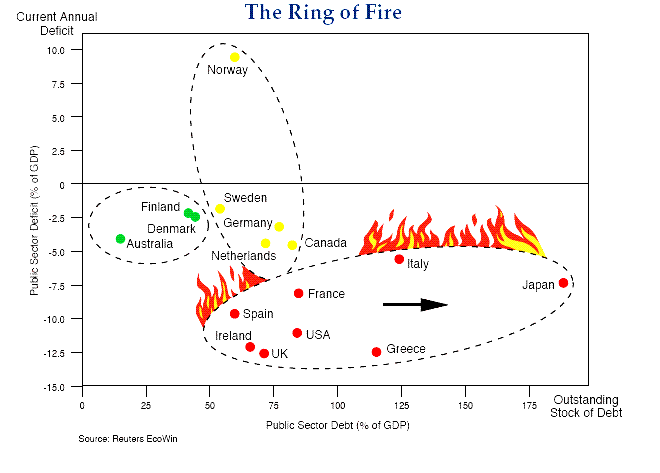Viewpoint: We should stop running away from radiationBy Wade Allison University of Oxford
More than 10,000 people have died in the Japanese tsunami and the survivors are cold and hungry. But the media concentrate on nuclear radiation from which no-one has died – and is unlikely to.

Modern reactors are better designed than those at Fukushima – tomorrow’s may be better still
Nuclear radiation at very high levels is dangerous, but the scale of concern that it evokes is misplaced. Nuclear technology cures countless cancer patients every day – and a radiation dose given for radiotherapy in hospital is no different in principle to a similar dose received in the environment.
What of Three Mile Island? There were no known deaths there.
And Chernobyl? The latest UN report published on 28 February confirms the known death toll – 28 fatalities among emergency workers, plus 15 fatal cases of child thyroid cancer – which would have been avoided if iodine tablets had been taken (as they have now in Japan). And in each case the numbers are minute compared with the 3,800 at Bhopal in 1984, who died as a result of a leak of chemicals from the Union Carbide pesticide plant.
Becquerels and Sieverts
- A becquerel (Bq), named after French physicist Henri Becquerel, is a measure of radioactivity
- A quantity of radioactive material has an activity of 1Bq if one nucleus decays per second – and 1kBq if 1,000 nuclei decay per second
- A sievert (Sv) is a measure of radiation absorbed by a person, named after Swedish medical physicist Rolf Sievert
- A milli-sievert (mSv) is a 1,000th of a Sievert
Q&A: Health effects of radiation
Energy solution or evil curse?
So what of the radioactivity released at Fukushima? How does it compare with that at Chernobyl? Let’s look at the measured count rates. The highest rate reported, at 1900 on 22 March, for any Japanese prefecture was 12 kBq per sq m (for the radioactive isotope of caesium, caesium-137).
A map of Chernobyl in the UN report shows regions shaded according to rate, up to 3,700 kBq per sq m – areas with less than 37 kBq per sq m are not shaded at all. In round terms, this suggests that the radioactive fallout at Fukushima is less than 1% of that at Chernobyl.
The other important radioisotope in fallout is iodine, which can cause child thyroid cancer.
This is only produced when the reactor is on and quickly decays once the reactor shuts down (it has a half life of eight days). The old fuel rods in storage at Fukushima, though radioactive, contain no iodine.
But at Chernobyl the full inventory of iodine and caesium was released in the initial explosion, so that at Fukushima any release of iodine should be much less than 1% of that at Chernobyl – with an effect reduced still further by iodine tablets.
Unfortunately, public authorities react by providing over-cautious guidance – and this simply escalates public concern.
Over-reaction
On the 16th anniversary of Chernobyl, the Swedish radiation authorities, writing in the Stockholm daily Dagens Nyheter, admitted over-reacting by setting the safety level too low and condemning 78% of all reindeer meat unnecessarily, and at great cost.

Bottled water was handed out in Tokyo this week to mothers of young babies
Unfortunately, the Japanese seem to be repeating the mistake. On 23 March they advised that children should not drink tap water in Tokyo, where an activity of 200 Bq per litre had been measured the day before. Let’s put this in perspective. The natural radioactivity in every human body is 50 Bq per litre – 200 Bq per litre is really not going to do much harm.
In the Cold War era most people were led to believe that nuclear radiation presents a quite exceptional danger understood only by “eggheads” working in secret military establishments.
To cope with the friendly fire of such nuclear propaganda on the home front, ever tighter radiation regulations were enacted in order to keep all contact with radiation As Low As Reasonably Achievable (ALARA), as the principle became known.
This attempt at reassurance is the basis of international radiation safety regulations today, which suggest an upper limit for the general public of 1 mSv per year above natural levels.
This very low figure is not a danger level, rather it’s a small addition to the levels found in nature – a British person is exposed to 2.7 mSv per year, on average. My book Radiation and Reason argues that a responsible danger level based on current science would be 100 mSv per month, with a lifelong limit of 5,000 mSv, not 1 mSv per year.
New attitude
People worry about radiation because they cannot feel it. However, nature has a solution – in recent years it has been found that living cells replace and mend themselves in various ways to recover from a dose of radiation.
These clever mechanisms kick in within hours and rarely fail, except when they are overloaded – as at Chernobyl, where most of the emergency workers who received a dose greater than 4,000 mSv over a few hours died within weeks.
However, patients receiving a course of radiotherapy usually get a dose of more than 20,000 mSv to vital healthy tissue close to the treated tumour. This tissue survives only because the treatment is spread over many days giving healthy cells time for repair or replacement.
In this way, many patients get to enjoy further rewarding years of life, even after many vital organs have received the equivalent of more than 20,000 years’ dose at the above internationally recommended annual limit – which makes this limit unreasonable.
A sea-change is needed in our attitude to radiation, starting with education and public information.
Then fresh safety standards should be drawn up, based not on how radiation can be excluded from our lives, but on how much we can receive without harm – mindful of the other dangers that beset us, such as climate change and loss of electric power. Perhaps a new acronym is needed to guide radiation safety – how about As High As Relatively Safe (AHARS)?
Modern reactors are better designed than those at Fukushima – tomorrow’s may be better still, but we should not wait. Radioactive waste is nasty but the quantity is small, especially if re-processed. Anyway, it is not the intractable problem that many suppose.
Some might ask whether I would accept it if it were buried 100 metres under my own house? My answer would be: “Yes, why not?” More generally, we should stop running away from radiation.
Wade Allison is a nuclear and medical physicist at the University of Oxford, the author of Radiation and Reason (2009) and Fundamental Physics for Probing and Imaging (2006).


 Modern reactors are better designed than those at Fukushima – tomorrow’s may be better still
Modern reactors are better designed than those at Fukushima – tomorrow’s may be better still Bottled water was handed out in Tokyo this week to mothers of young babies
Bottled water was handed out in Tokyo this week to mothers of young babies


